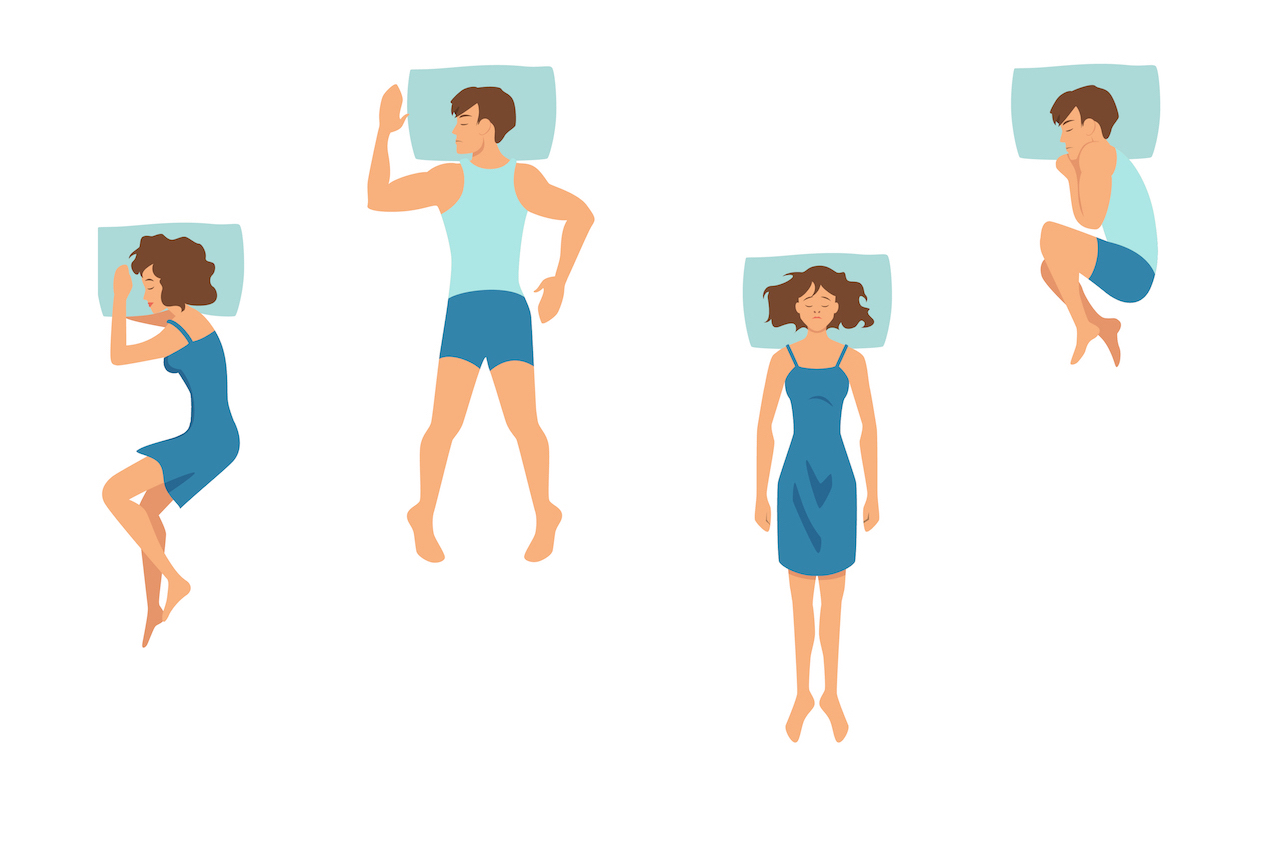Sleeping should be as easy as closing your eyes and dozing off, right? It turns out that you may be doing it wrong. Besides too much or too little sleep, snoozing in certain positions has different effects on your health.
Here’s how.
On your side
Benefits
If your go-to-sleep position is on your left or right side, you’re a snoozing champ! Sleeping on your side is one of the best positions for overall health. Research shows that almost two-thirds of all people sleep in this position. Those who lay on their side are less likely to suffer from conditions like snoring and sleep apnoea than people whosleep on their back. Snoozing on your side also reduces the risk of neck and back pain.
Risks
Although sleeping on your side has benefits there are risks, too. This position may put too much pressure on your stomach, liver and lungs. Side sleeping may also contribute to breast sagging and wrinkles. On the other hand, sleeping on your right may constrict some blood vessels and circulation if you move too much while sleeping.
On your back
Benefits
About eight percent of the world’s population sleep on their back. This position helps to evenly distribute your weight. This allows your neck, spine and head to stay in a neutral position while you sleep. This is also the best position to prevent breast sagging and wrinkles. It also helps minimise the risk of acid reflux.
Risks
This position increases the risks of snoring and sleep apnoea.
On your stomach
Benefits
Snoozing on your stomach may help ease snoring and sleep apnoea.
Risks
Consider a different way to sleep as this may be the worst sleeping position for your health. This stance flattens the natural curve of your spine, and can lead to back pain. This is because most of your weight is in the middle of your body. Sleeping with your head turned to one side can also place strain on your neck. If you often sleep in this position and are struggling to sleep in other positions, use a pillow to train your body to sleep on its side.
Find the best position
- If you sleep on your side, keep your back as straight as possible. Invest in a mattress that supports the natural curve of your body and the pressure points of your shoulders and hips. You could also try placing a tall pillow between your legs to better align your neck with your back.
- When sleeping on your side, snoring aids like nasal strips can help with snoring.
- It’s best to choose another position, but if you choose to sleep on your stomach, prop a thin pillow under your head, and place a pillow under your pelvis to add a curve to your spine.
- If you’re trying to transition to a different sleeping position, block out all the natural sunlight in your room and put away your electronic devices before bedtime!

